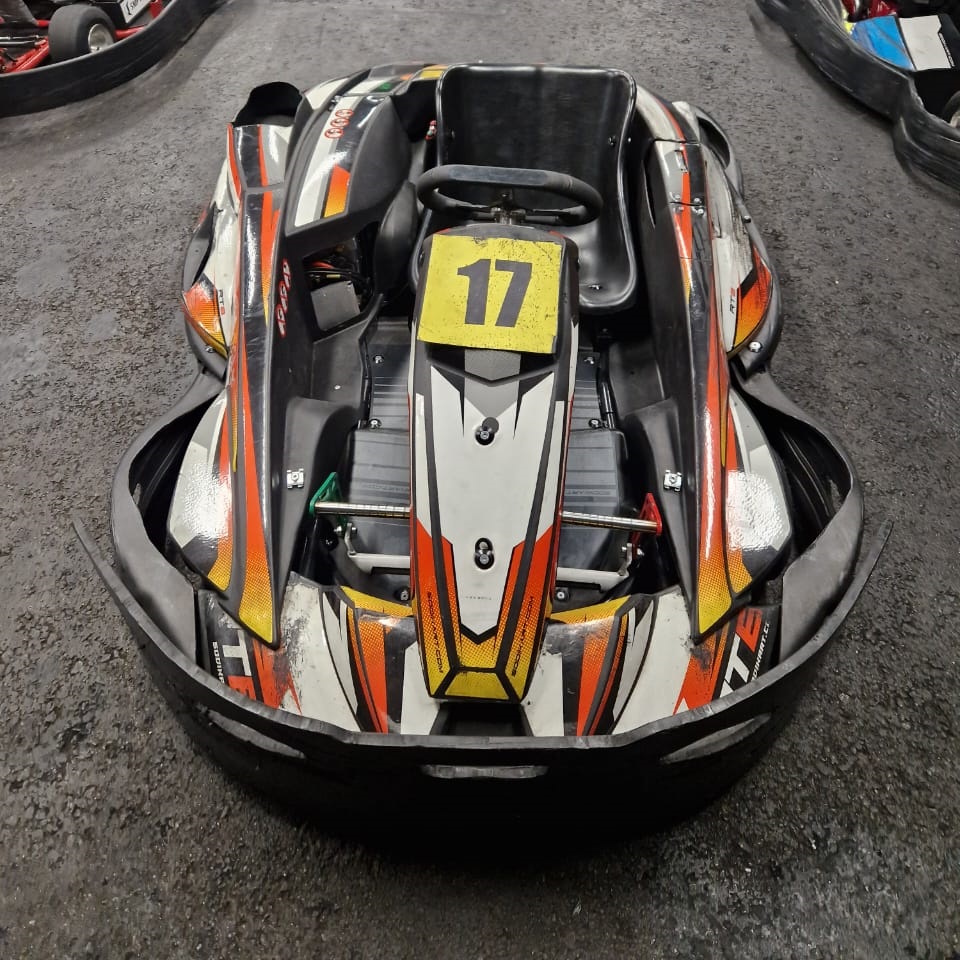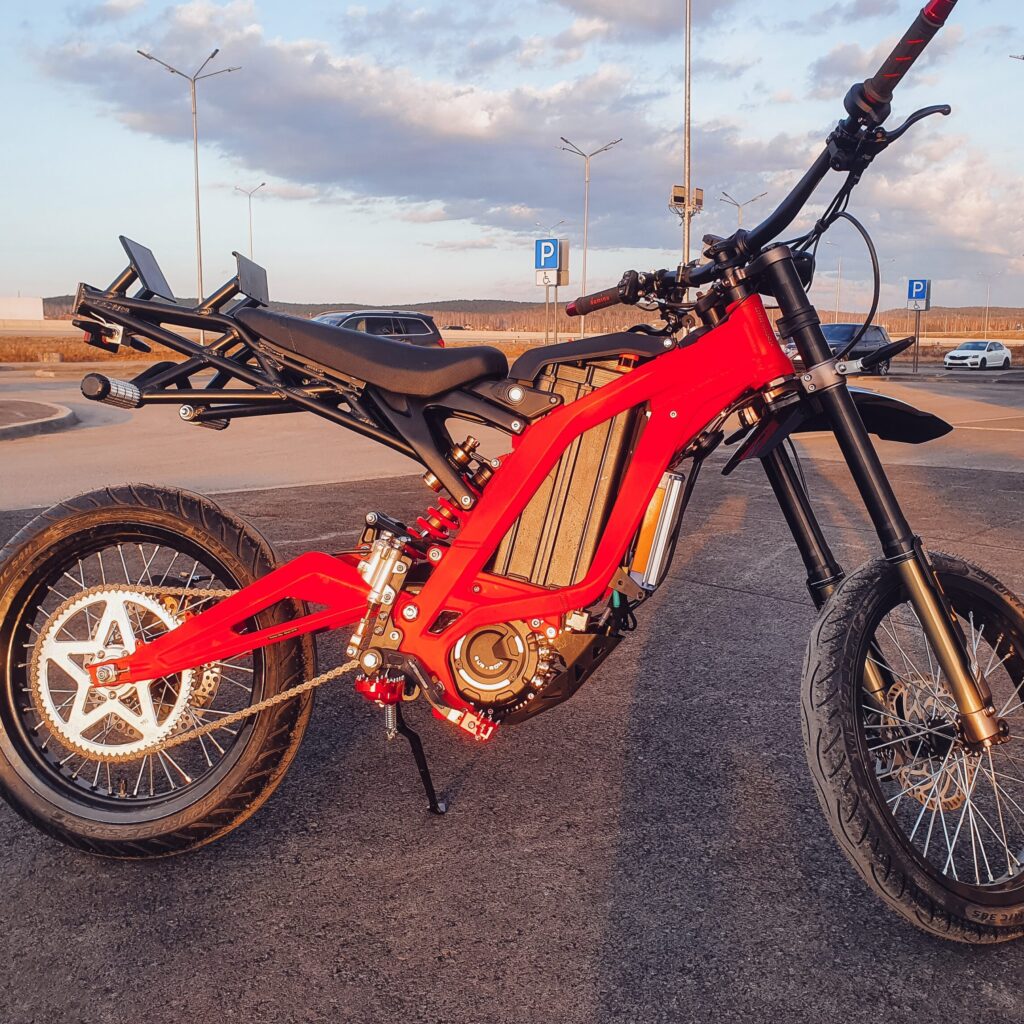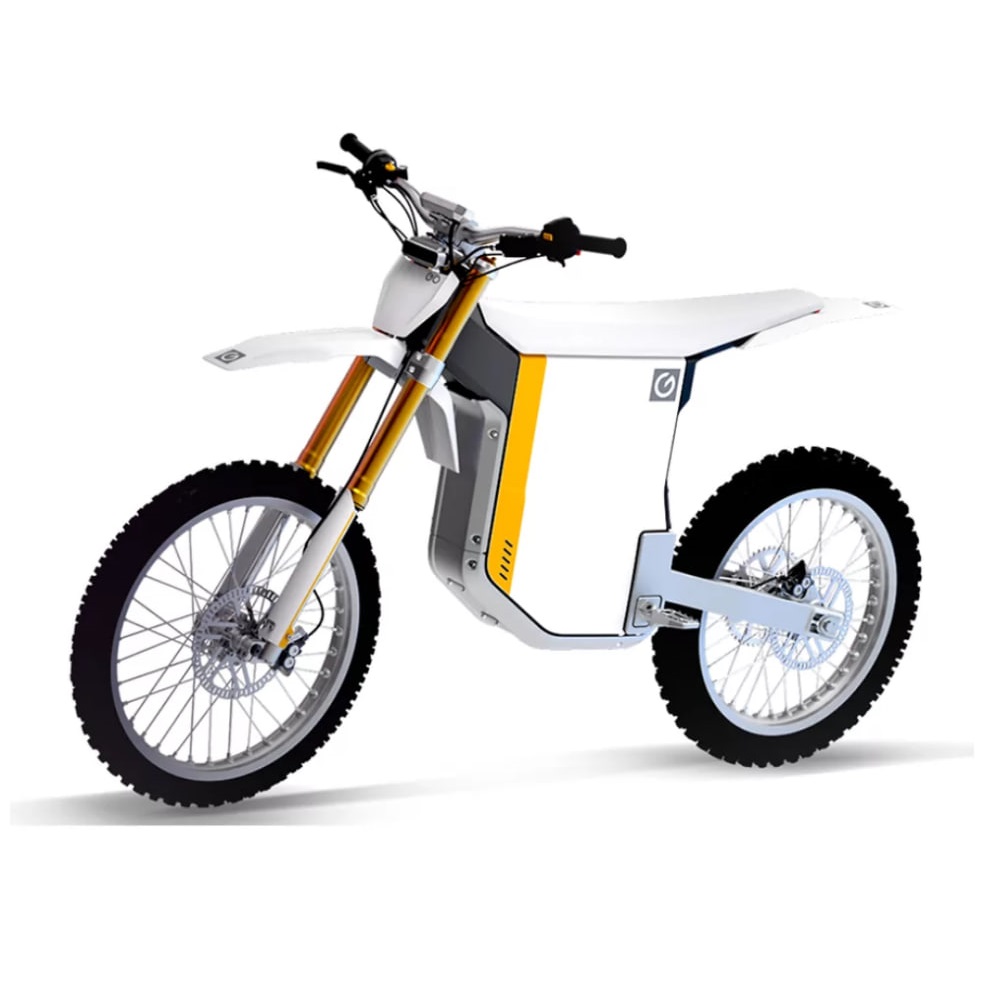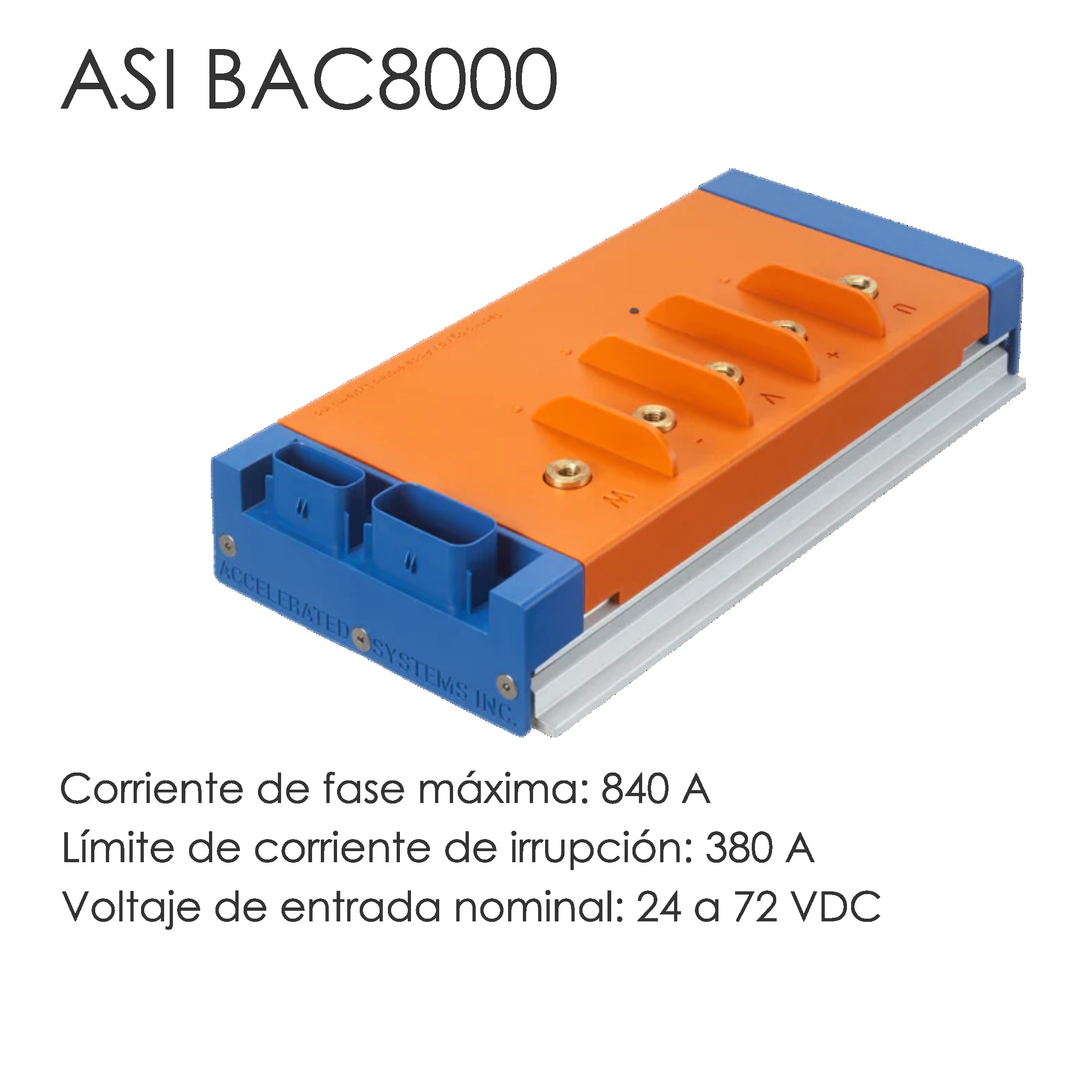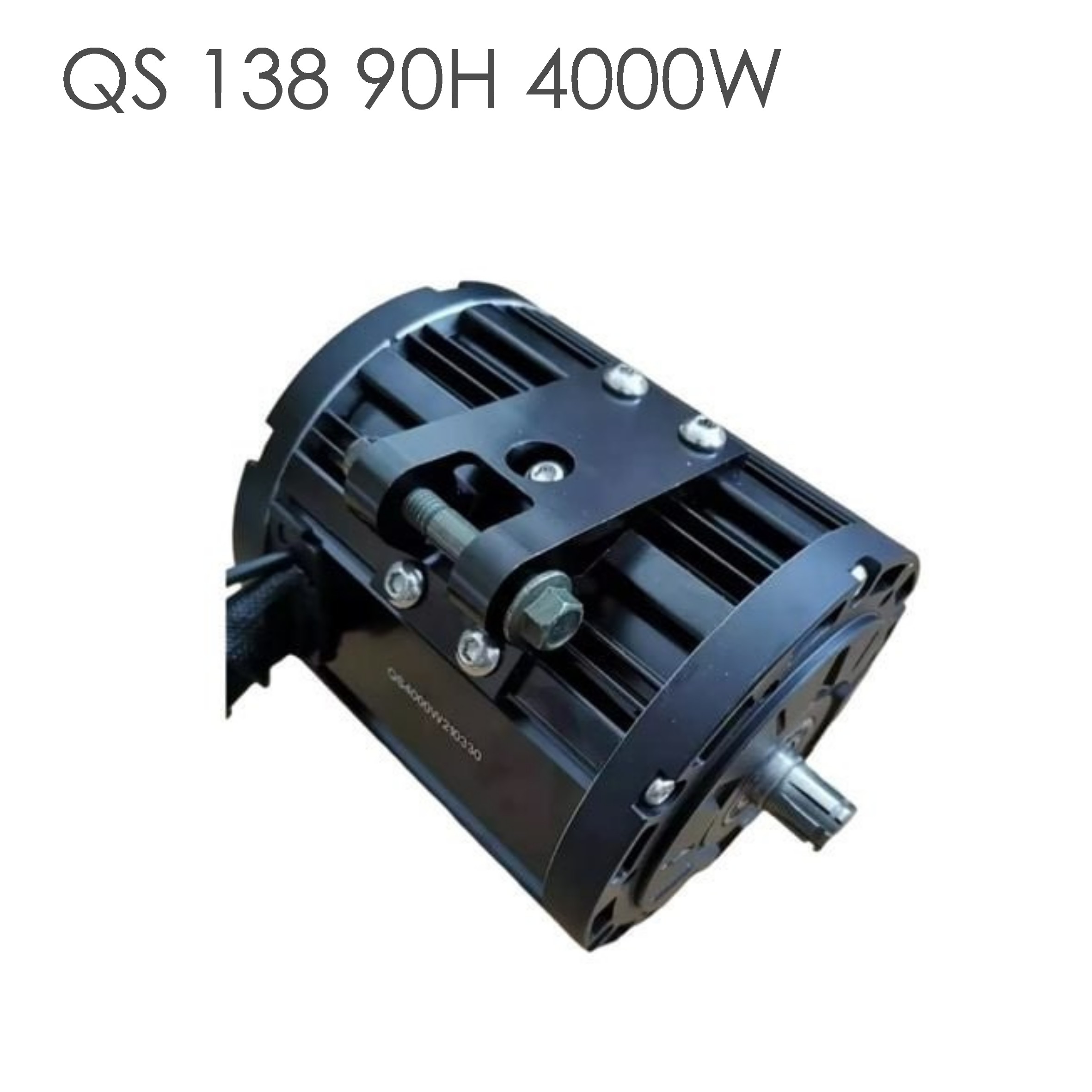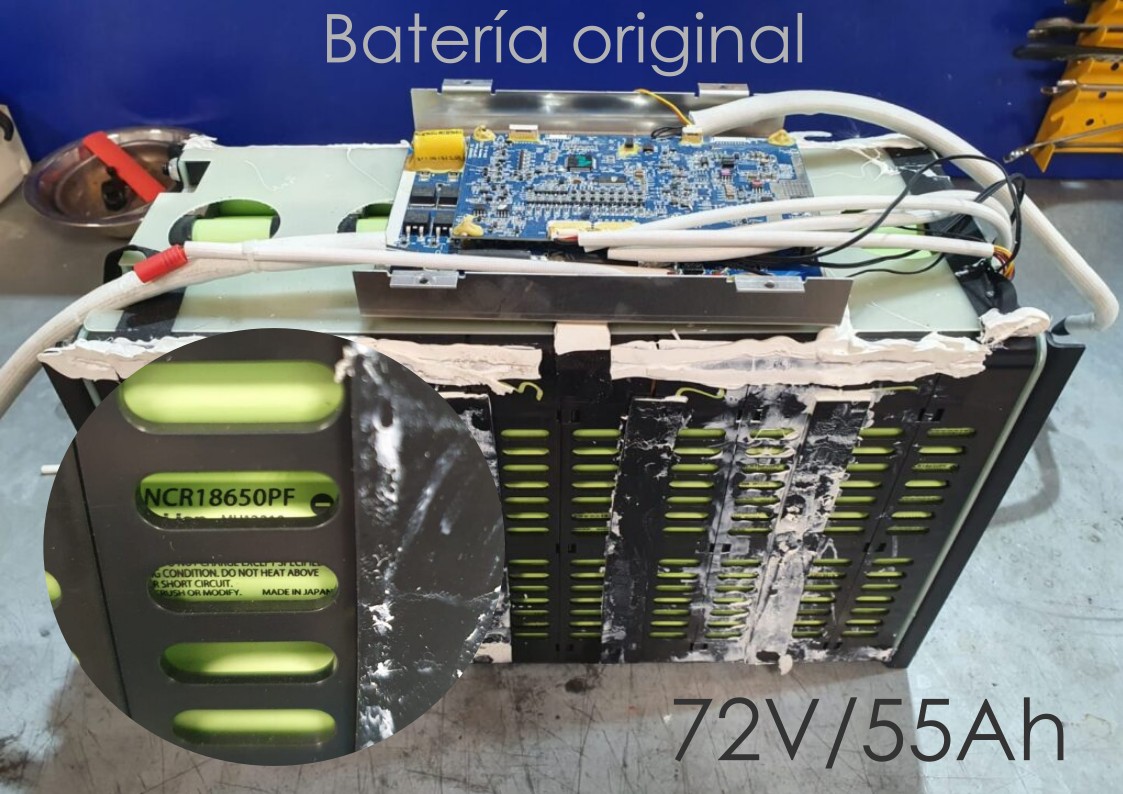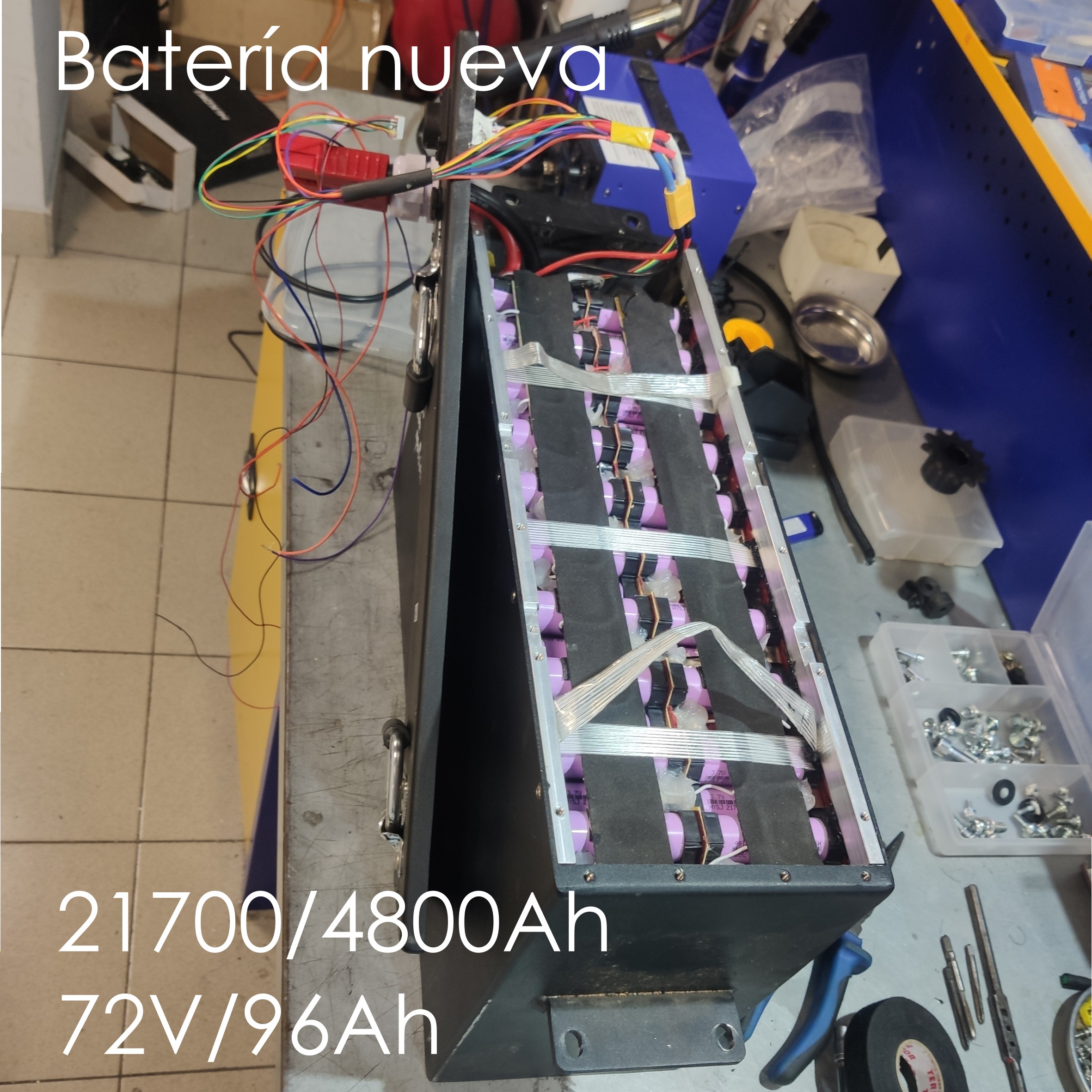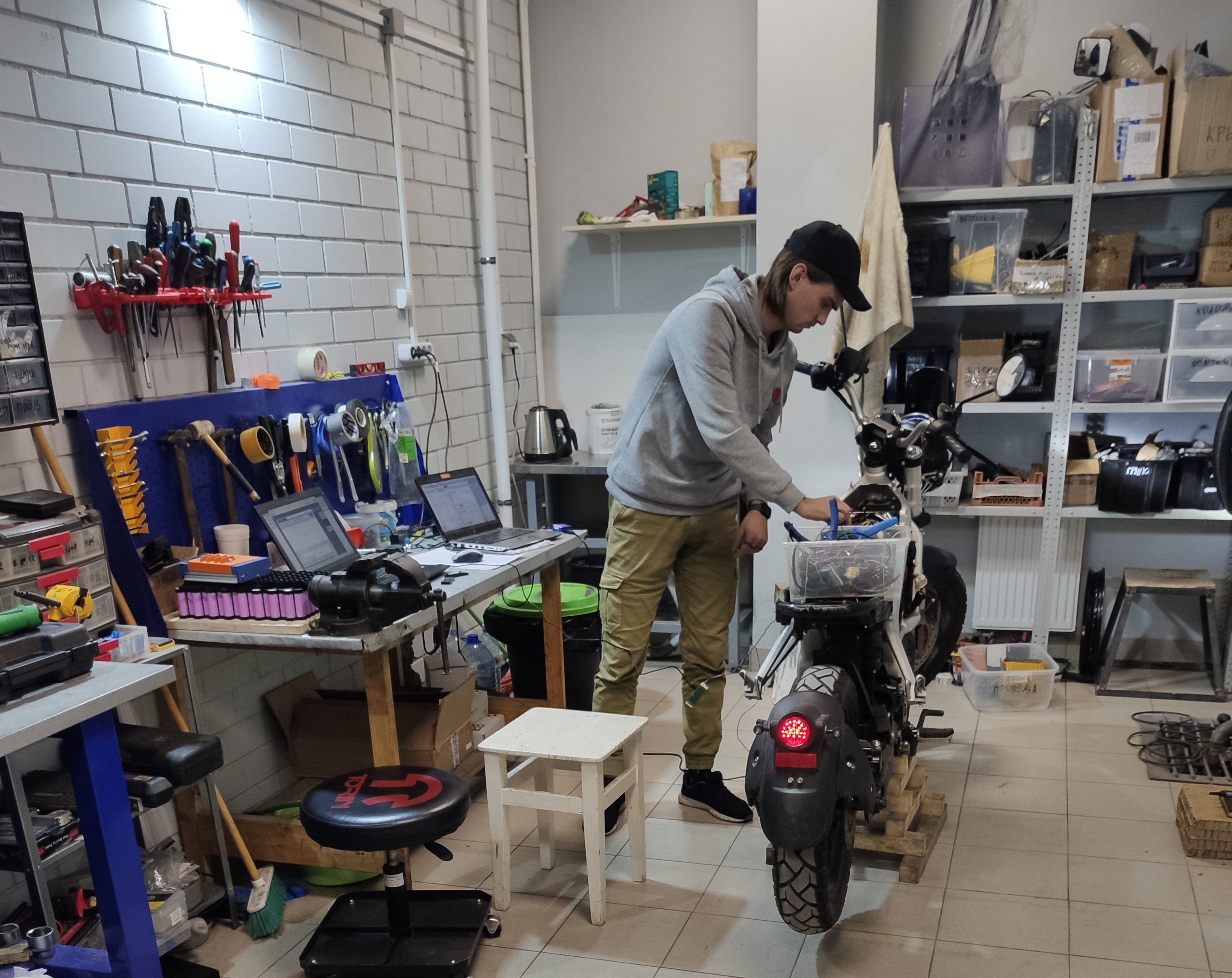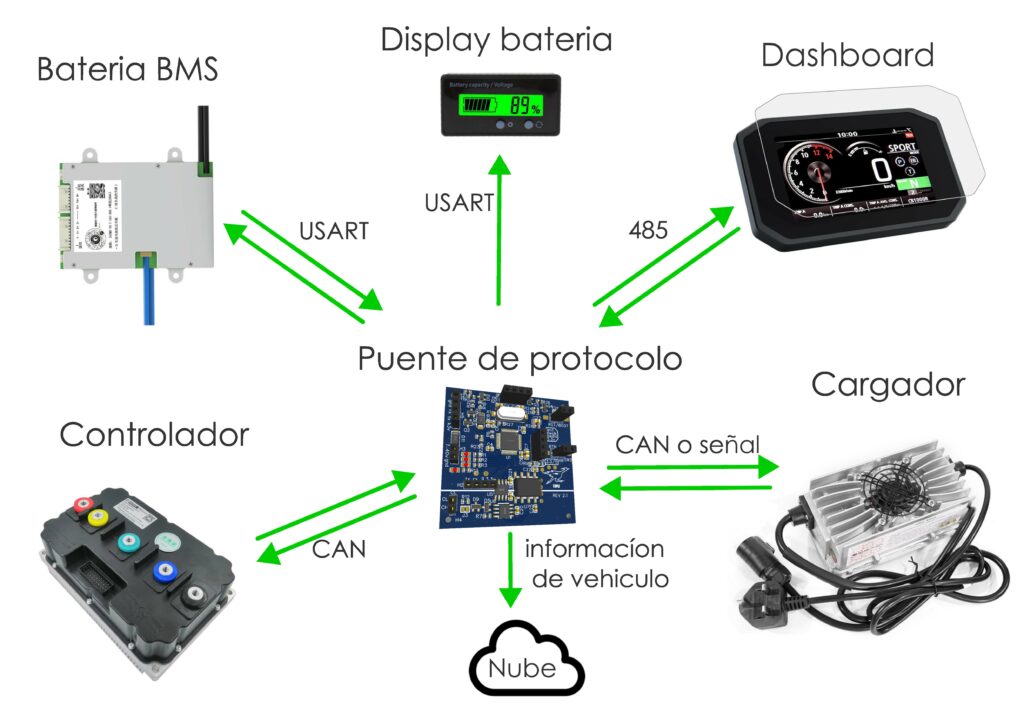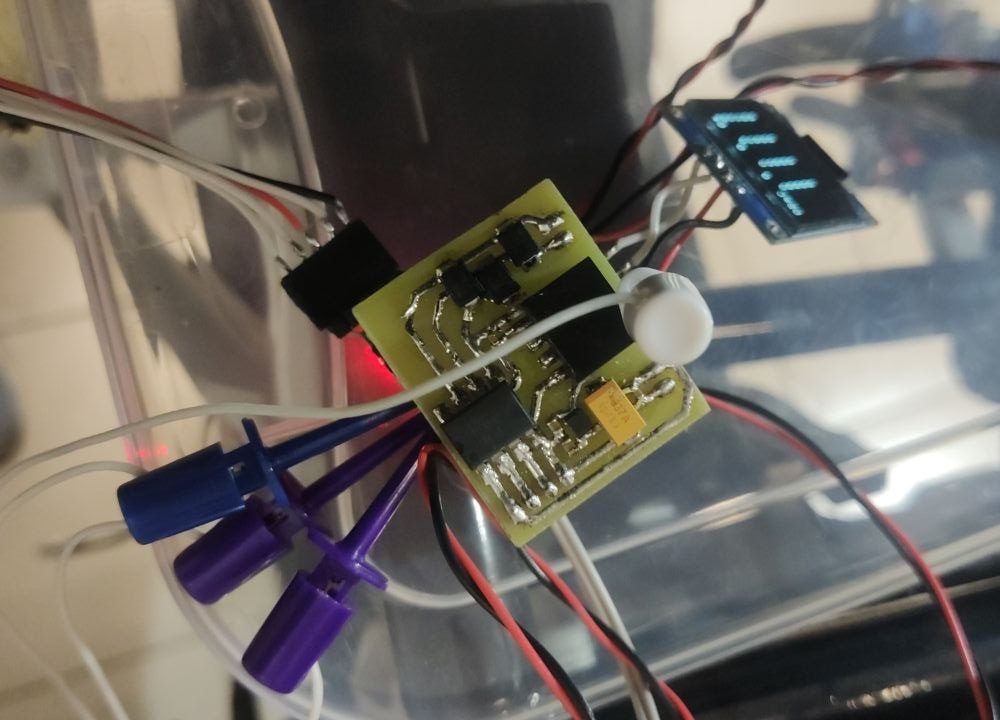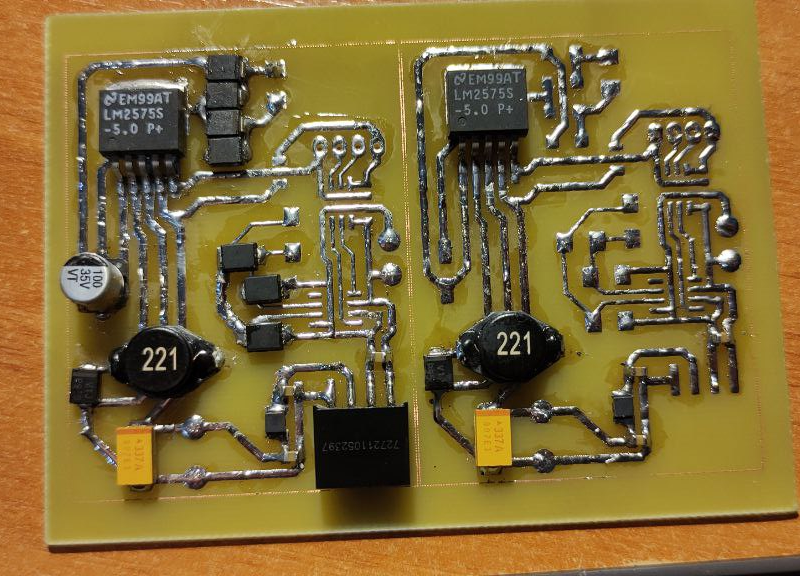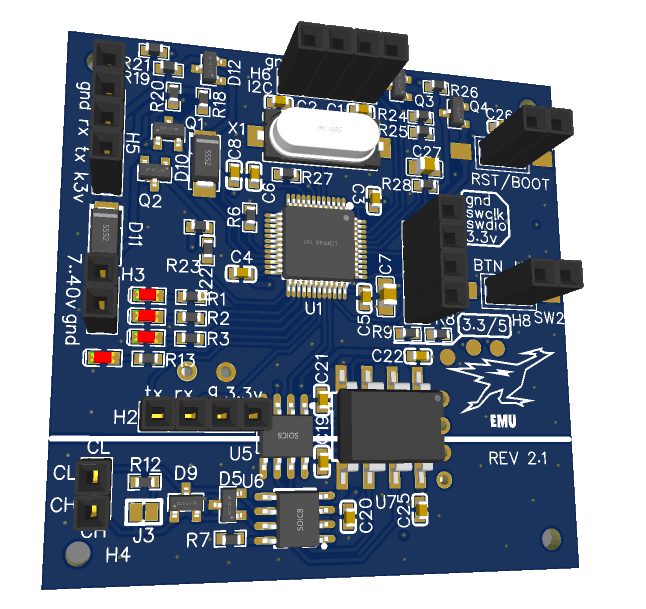In this section, we publish interesting works on tuning and electrification of electric transportation.
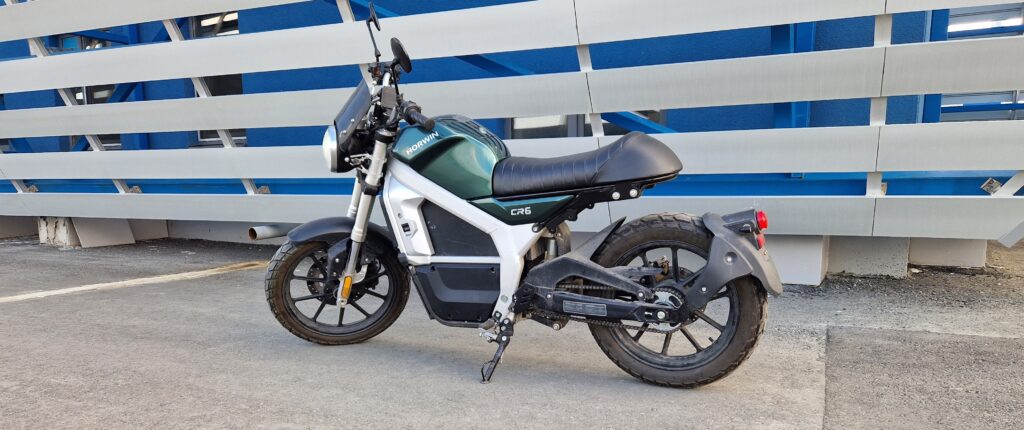
HORWIN CR-6
More power, more distance
After bringing in the first Horwin CR-6 and Horwin CR-6 PRO, we realized two things. First, it’s a full-sized bike with a decent aluminum frame and design. It’s comfortable to sit on, and it looks better under taller riders than all Soco models. The second thing is that both versions are painfully slow. It feels like you’re sitting on a toy rather than a motorcycle. It’s understandable given the price of the bike, but we wanted more. Disassemble started:
We wanted to make it more agile. Our goal was a 100 km range on a single charge and a top speed of 130 km/h, while maintaining its original appearance.
To achieve this, our motorcycle needed to have around 20 kW of power and cruise at 105 km/h at optimal engine rpm. Initially, we chose a QS 138 4000W motor with air cooling and an ASI BAC8000 controller. The built-in charger and instrument panel were decided to remain standard, but with plans to install a fast charge system.
The development and assembly of the battery were carried out by our friends at Uners, resulting in a battery of 400 lithium-ion cells, 21700/4800mAh. A total of 72 Volts and 96 Ah. A BMS with Bluetooth and a UART communication protocol.
The installation of the controller and motor required the fabrication of mounting brackets. After that, we proceeded with the road tests. The motorcycle worked, but in some modes, the motor began to overheat. We couldn’t achieve the necessary gear ratio with the direct drive, and the chain would occasionally slip, as seen in the video. Also, the original comfort module, which controls the turn signals, charger, and instrument panel, didn’t recognize the information from the new controller and battery. However, the performance was close to what we aimed for. A top speed of 135 km/h, 0-100 km/h in 8.8 seconds, and a range of 70 to 90 km depending on the mode.
BURNOUT test
DRIFT test
It was decided to change the motor to a QS138v3 4000W with air cooling, thus expanding our gear ratio options. A new bracket was designed, fabricated, and installed. After installation, the motor stopped overheating.
The issue with the charger and instrument panel required the most effort. We had to develop both hardware and software to interface the battery’s UART information with the controller’s CAN protocol and also ‘translate’ this data to communicate with the standard instruments. We had to do everything manually since Horwin doesn’t provide their dictionaries or keys. The result of 1.5 months: a motorcycle ready for road testing.»
Resultado final
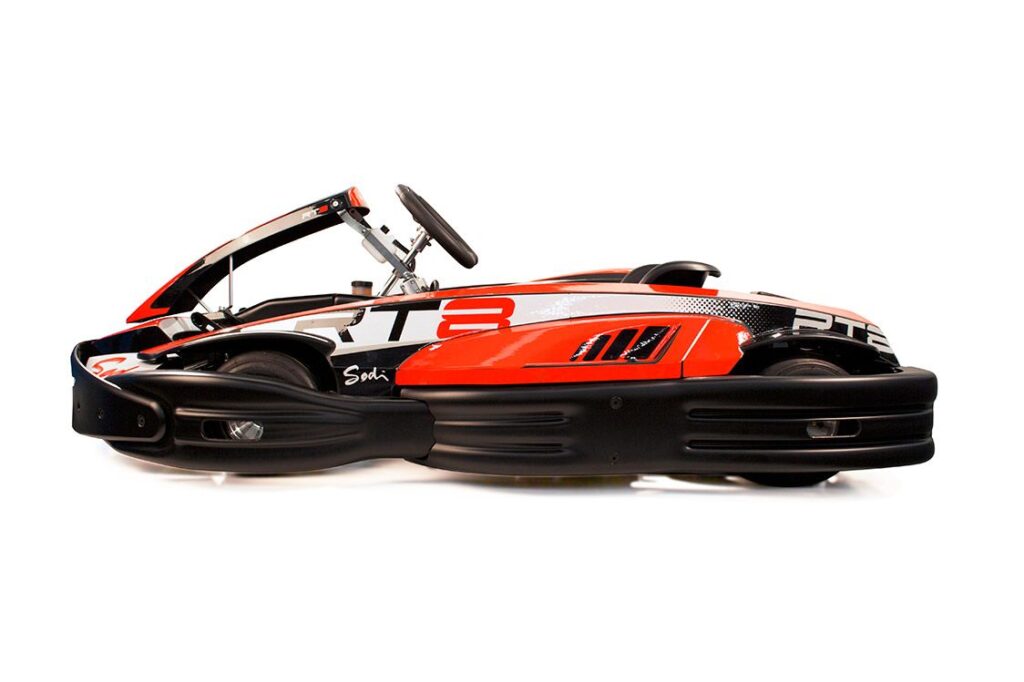
Sodi SR5 / RT8
Go-kart. ICE to electric powered
Our friends from the go-kart rental business approached us with a request to develop a kit to convert a Sodi go-kart from an internal combustion engine (ICE) to an electric motor. They faced the problem of high ventilation costs for their indoor karting track during the winter season due to the mandatory heating of intake air. Additionally, they wanted to launch more go-karts in a single race, something safety standards related to air pollution levels wouldn’t allow. Ideally, such a rental fleet should operate on an hourly cycle without interruption: four 10-minute races with four 5-minute breaks.
Scanning and modeling
To implement this idea, we dismantled the power unit and scanned the space for the motor installation in the side pod and the area where the fuel tank was located using a 3D scanner. After working with the models, we decided not to touch the space for the fuel tank and attempted to fit the battery and motor where the engine and gearbox were previously mounted. We set such strict constraints on ourselves because we wanted these kits to be fully interchangeable with the standard factory solutions. Everything should be mounted on factory brackets without altering the kart’s construction.
Fabrication.
After modeling, we proceeded to manufacture the battery case and motor bracket. Due to limited space, the component base chosen included a QS165 5000W motor paired with a Fardriver 72680 controller. This system is powered by a removable LiFePO4 22S1P battery. The idea is to have two batteries for each kart, with one charging while the other operates in the kart. After the initial fitting, the prototype underwent a series of test runs, revealing some shortcomings. There were issues with the motor bracket’s rigidity, and the mechanics servicing the karts found the battery mounting system too complex for frequent daily battery replacements.
We fixed these issues and conducted another round of testing, during which we tuned the kart to match the performance of its gasoline-powered counterparts.
At present, the kart has been put into operation, and we have been tasked with developing another version with a non-removable large battery capable of charging at twice the current rate. Stay tuned for updates.
Final result
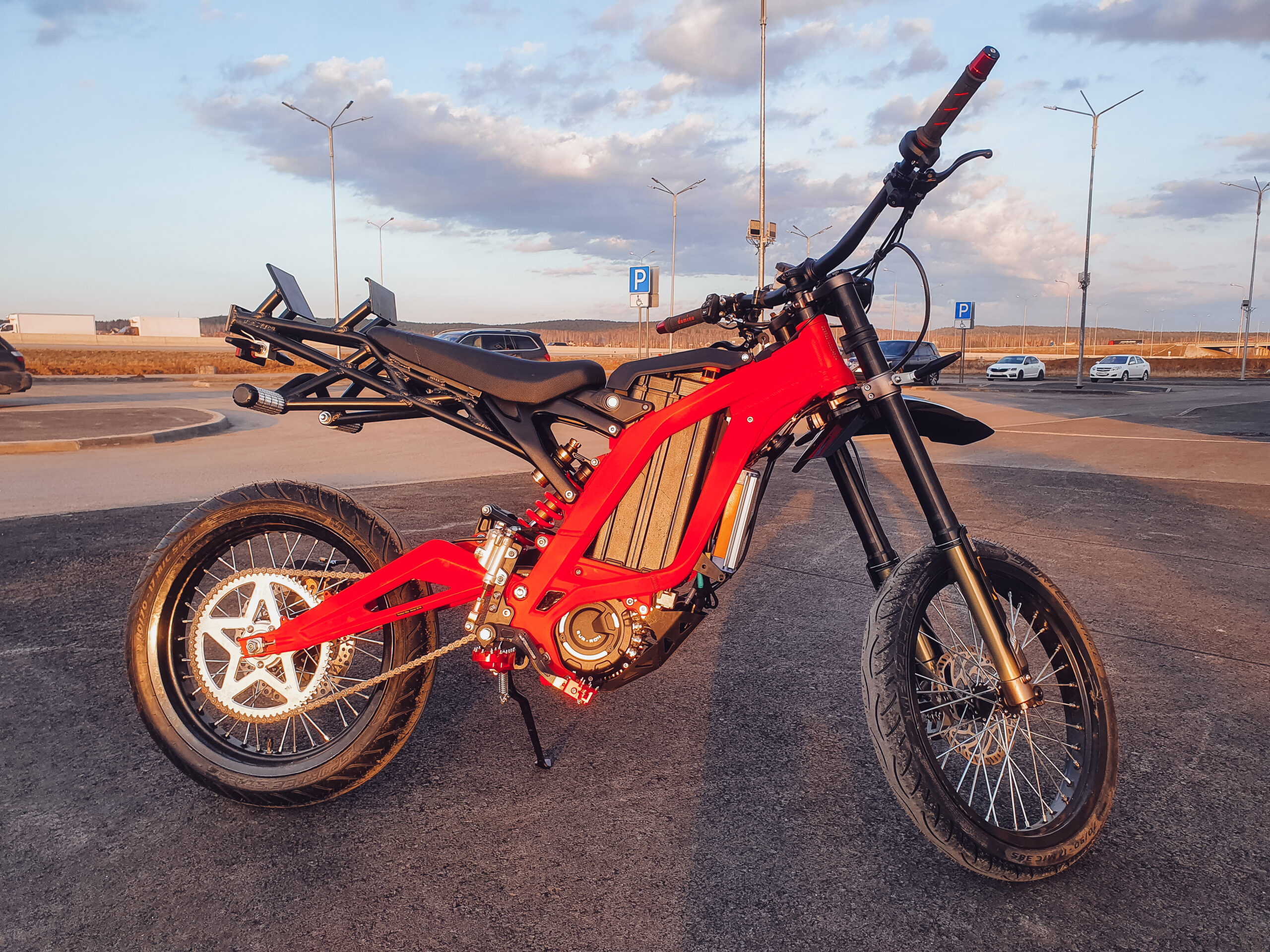
Sur-ron LightBee Stunt
Undoubtedly, stunt riding is evolving, and some riders are starting to experiment with electric motorcycles. One of these riders approached us with a request to make the Sur-Ron Light Bee into a lightweight training device for practicing new tricks. For this purpose, he purchased a Sur-Ron Light Bee, and it had to remain lightweight while delivering the torque and speed characteristics required for stunts. Among his requests were simultaneous hand and foot brake control, larger brakes on the rear wheel, and wheels with a wide rim.
Several ideas emerged from this request:
1 – Make a battery with higher current output in a standard casing.
2 – Install an adjustable and more powerful controller.
3 – Install the largest possible rear sprocket.
4 – Replace the rear brake with a motorcycle-grade one.
5 – Create a clutch analog, which would essentially cut off power using a handle.
As the controller, we decided to use the reliable ASI BAC4000, and we assembled the battery with 21700 cells. While the controller was installed without issues, the battery was slightly taller and didn’t fit under the standard cover. A specially designed, taller cover was manufactured and 3D-printed to fit into the standard battery compartment under the lid.
Next, we tackled the brakes. None of the bicycle options worked, so we decided to use a motorcycle braking solution. At that time, there were no ready-made kits for installing a foot brake, so we had to fabricate a custom adapter. The reservoirs of the two brake cylinders were connected into a single hydraulic line with check valves. We installed a motorcycle brake disc with an adapter and a custom caliper bracket.



The wheels also required work. In fact, we had to assemble motorcycle rims onto hubs that weren’t designed for this purpose. The rear rim was twice the size of the standard, requiring modifications to the spacers to keep the brake disc, sprocket, and chain aligned without contacting the wheel or swingarm.
The client was very particular about throttle response tuning, so final adjustments took additional time as we modified the program during training sessions. As a result, the client received a very lightweight and safe way to practice tricks before attempting them on gasoline-powered equipment.


